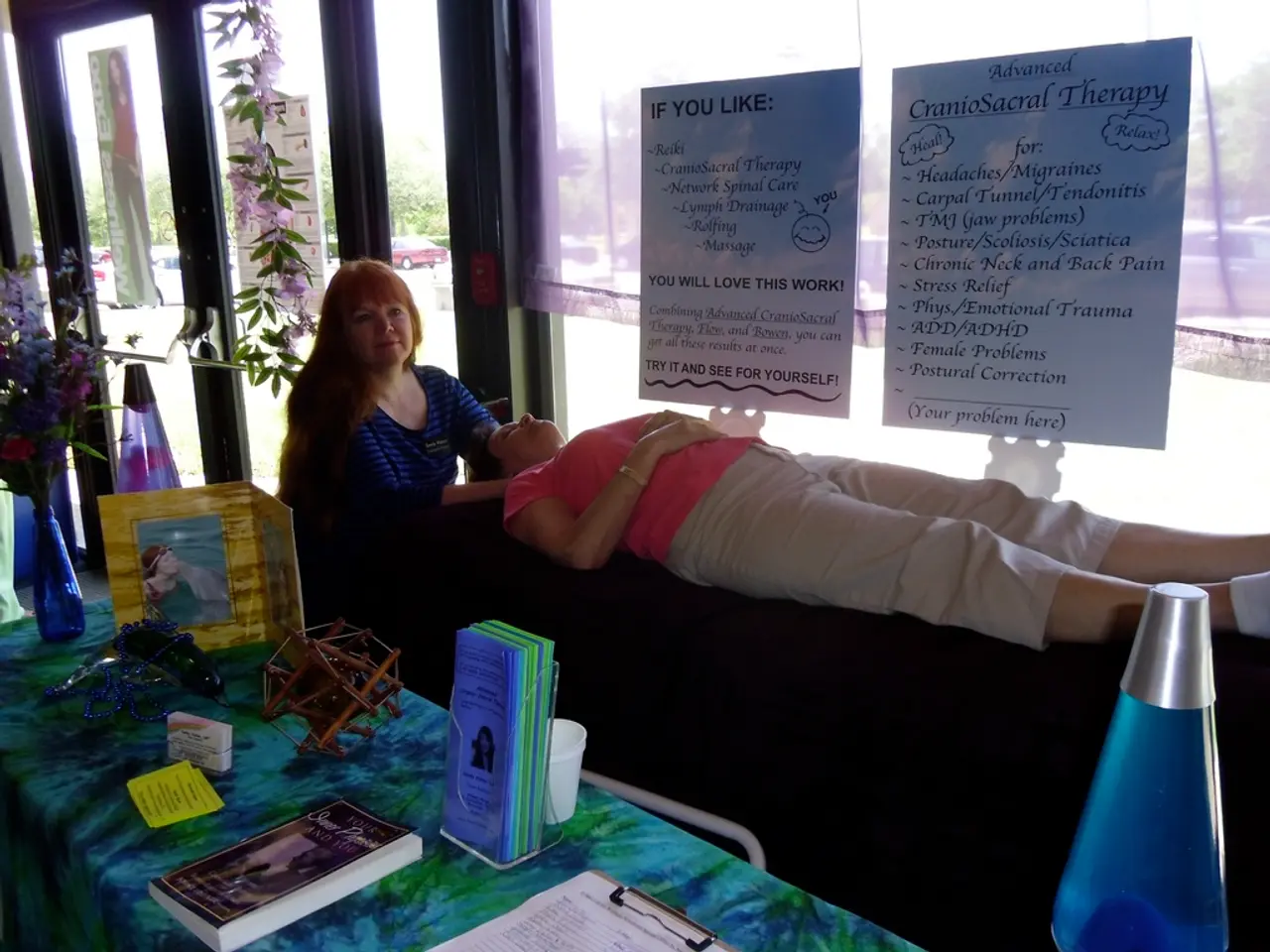Life expectancy and potential treatments for Lewy body dementia
Lewy Body Dementia (LBD) is a progressive brain disorder that affects a significant number of individuals, particularly those aged 50 years and older. This condition, which falls under the umbrella term of Parkinson's disease dementia (PDD) and dementia with Lewy bodies (DLB), is characterized by atypical deposits of alpha-synuclein protein in the brain, known as Lewy bodies.
Stages and Symptoms of LBD
LBD progresses through several stages, including stage 1 (olfactory bulb only), stage 2a (brainstem predominant), stage 2b (limbic predominant), stage 3 (brainstem and limbic), and stage 4 (neocortical). Symptoms can vary widely but often include difficulty swallowing, disturbed sleep, swings between being alert and being confused or sleepy, challenges with movement, hallucinations, depression, and fainting or unsteadiness.
Life Expectancy and Treatment
The life expectancy after an LBD diagnosis can range from months to 20 years, with a typical life expectancy of approximately 5 to 8 years from diagnosis of dementia symptoms. Treatment options for PDD/LBD focus on symptom management and quality of life.
Cognitive symptoms can be managed with cholinesterase inhibitors like rivastigmine. Motor symptoms may respond to low-dose levodopa, although it is often less effective than in Parkinson’s disease without dementia and can worsen hallucinations. Behavioral symptoms are managed carefully, with the cautious use of quetiapine or clozapine to manage psychosis or agitation. Sleep and mood disturbances can be treated with melatonin or clonazepam for REM sleep behavior disorder (RBD), and SSRIs for depression or anxiety.
Complications and Prognosis
As the disease progresses, complications such as falls, aspiration pneumonia, and immobility-related issues significantly contribute to morbidity and mortality. In contrast, specialized physiotherapy in Parkinson’s disease (before or without dementia) can extend life expectancy by reducing complications like falls and pneumonia. However, for PDD/LBD patients, treatment mostly centers on palliative care and symptom relief due to faster progression and poorer prognosis.
Support and Lifestyle Interventions
Support groups may be beneficial for caregivers, friends, and family members of those with LBD. Lifestyle interventions, occupational therapy, physical therapy, speech therapy, music therapy, and aromatherapy may be recommended as part of a comprehensive treatment plan for LBD.
In conclusion, Lewy Body Dementia is a complex and progressive condition that requires a multidisciplinary approach to management. The focus is on maintaining quality of life for as long as possible.
| Aspect | Parkinson’s Disease Dementia (PDD) / LBD | Parkinson’s Disease (PD) without Dementia | |-------------------------------|--------------------------------------------------|--------------------------------------------------| | Life Expectancy | ~5–8 years after dementia diagnosis[2][4] | 15–20 years post diagnosis if well managed[1] | | Cognitive symptom treatment | Cholinesterase inhibitors (rivastigmine)[2][4] | Not typically indicated unless dementia present | | Motor symptom treatment | Low-dose levodopa, less effective, may worsen hallucinations[2][4] | Levodopa, often effective | | Behavioral symptom treatment | Avoid typical antipsychotics; cautious use of quetiapine/clozapine[2][4] | Symptom-dependent | | Sleep/mood management | Melatonin, clonazepam for RBD; SSRIs for depression[2][4] | May be used as needed | | Complications | Falls, pneumonia, immobility-related morbidity[2][4] | Falls, pneumonia; may be mitigated by specialized physiotherapy[3] |
- The neurological disorder known as Lewy Body Dementia (LBD) is characterized by atypical deposits of alpha-synuclein protein in the brain, leading to a progressive brain condition.
- LBD has several stages, including stage 1 to stage 4, each presenting a variety of symptoms such as difficulty swallowing, disturbed sleep, and challenges with movement.
- Treatment options for LBD focus on symptom management and improving quality of life, with cognitive symptoms often managed using cholinesterase inhibitors like rivastigmine.
- As the disease progresses, chronic diseases like falls, aspiration pneumonia, and immobility-related issues can significantly contribute to morbidity and mortality.
- Mental health support groups may benefit caregivers, friends, and family members of those with LBD, while lifestyle interventions such as occupational therapy, physical therapy, speech therapy, music therapy, and aromatherapy may be recommended as part of a comprehensive treatment plan.
- In conclusion, managing Lewy Body Dementia (LBD) requires a multidisciplinary approach, with a focus on maintaining health-and-wellness, mental-health, and managing chronic diseases for an improved prognosis.




